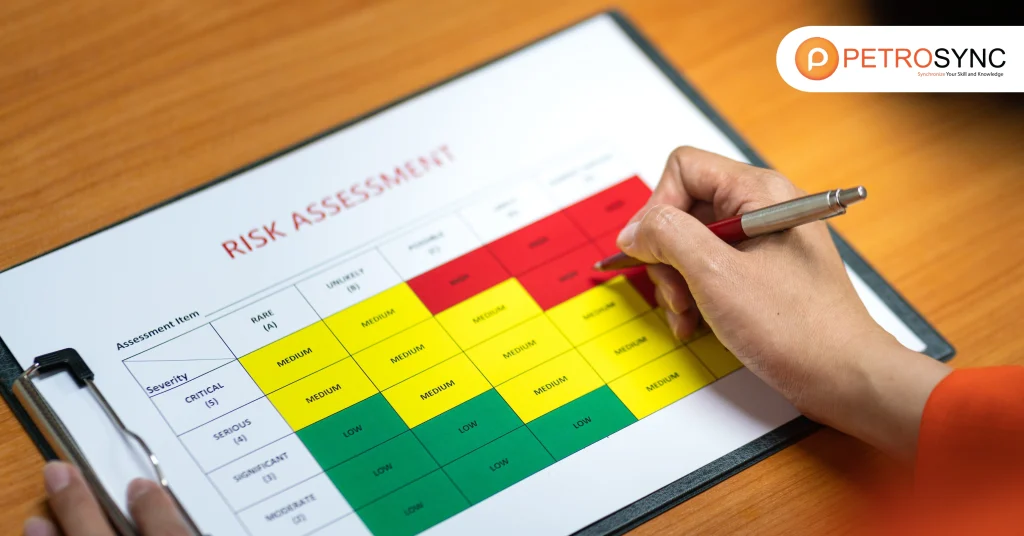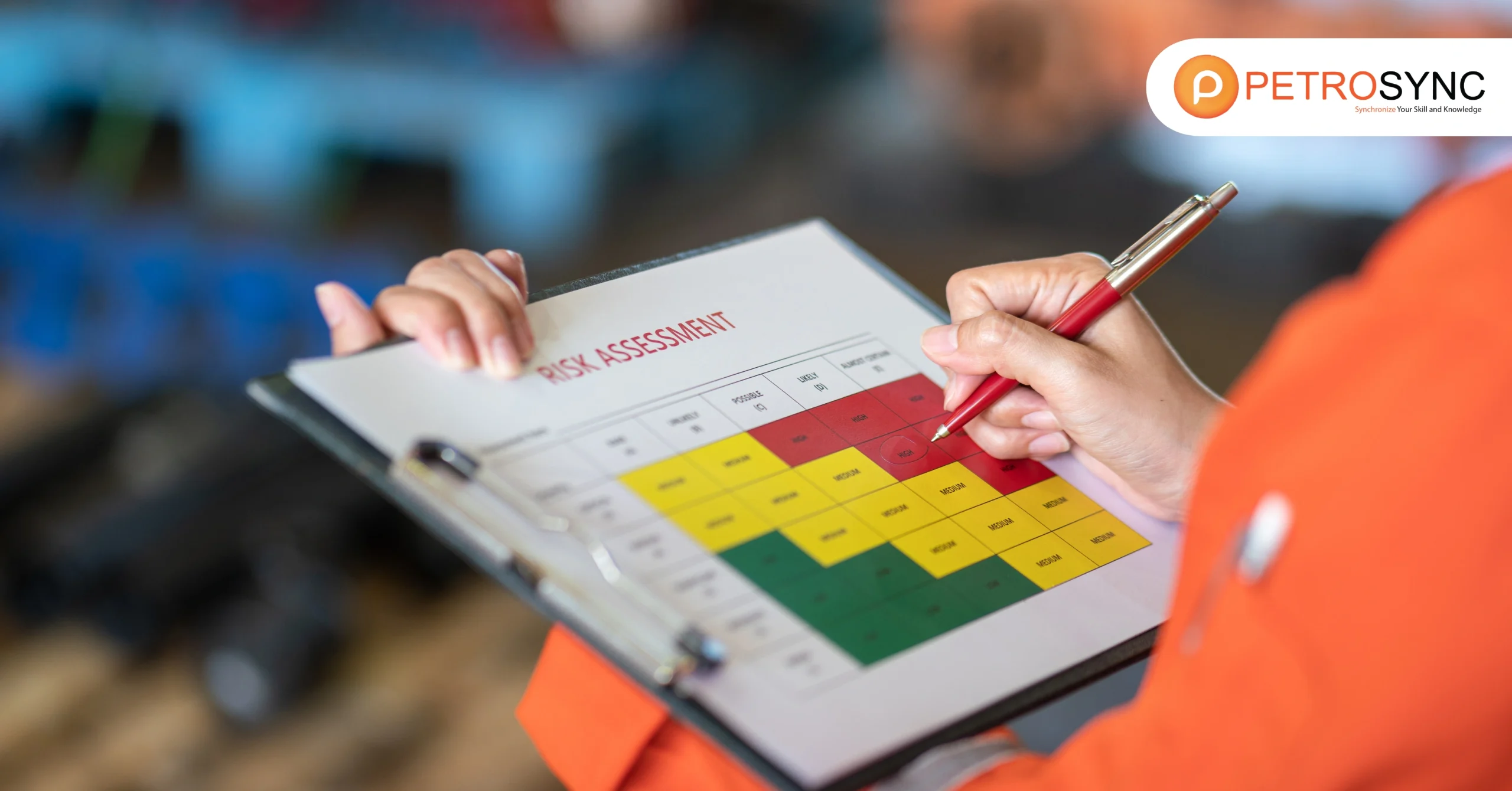In today’s fast-paced industries, understanding and managing risks is critical to achieving business success. The role of a risk matrix becomes indispensable in this scenario. This powerful tool allows professionals to evaluate potential hazards systematically and ensure that risks are managed effectively.
Especially in high-risk industries like oil and gas, having a clear risk matrix meaning can be the difference between safety and catastrophe. Let’s dive deeper into how this tool works and why it is essential for success.
What Is a Risk Matrix?

Risk matrix is a valuable tool used in risk assessment to determine the level of risk by considering the category of probability or likelihood against the consequence severity categories. It’s commonly used in risk-based inspections. The matrix is a table with two axes: one measures the probability of failure, and the other measures the consequence of failure.
The probability axis ranges from “very low” to “very high,” and the consequence axis ranges from “minor” to “major.” This matrix permits the team to prioritize inspection and maintenance activities for high-risk equipment and allocate resources appropriately. Using the risk matrix, the RBI team can give each potential failure scenario a risk score.
This helps prioritize which failures require immediate attention and which can be addressed later through inspection and maintenance efforts.
What Are The Components of a Risk Matrix?
In a risk matrix, organizations in the oil and gas industry combine the severity and likelihood of potential risks to determine the overall risk level, enabling them to prioritize their risk management efforts. Below is an in-depth explanation of each component.
1. Severity
This refers to the degree of harm or damage that may result from a potential risk. The severity level can be classified as low, medium, or high. The severity level is usually determined by assessing the potential impact of the risk on people, the environment, equipment, and operations.
An example of a high-severity risk would be a blowout at an oil well. This could result in severe injuries or fatalities, significant environmental damage, and major financial losses for the company.
2. Likelihood
The second component refers to the probability of a risk event occurring. Likelihood can be classified as rare, possible, or likely. We usually determine the likelihood level by considering the frequency of similar events in the past, the current conditions, and the effectiveness of existing controls.”
An example of a likely risk would be a pipeline rupture due to corrosion. The industry recognizes corrosion as a risk, and experts assess the likelihood of a rupture based on the pipeline’s age and condition, as well as the effectiveness of corrosion prevention and monitoring measures.
3. Risk Level
This refers to the overall level of risk associated with a particular event. We usually determine the risk level by combining the severity and likelihood levels in a risk matrix. The risk matrix provides a visual representation of the risk level, with different levels of risk identified as low, medium, high, or extreme.
For instance, the risk level of a blowout at an oil well would be classified as extreme due to its high severity and low likelihood of occurrence. Conversely, the risk level of a pipeline rupture due to corrosion would be classified as high due to its likely occurrence and the potential severity of the consequences.
Overall, the use of a risk matrix in the oil and gas industry can help companies to identify and prioritize risks, and develop appropriate risk mitigation strategies to minimize the potential impact of these risks on people, the environment, equipment, and operations.
What Are The Benefits of Risk Matrix in the Oil and Gas Industry?
Companies in the oil and gas industry can use a risk matrix as a valuable measurement to identify and evaluate potential risks and their impact on their operations, assets, and stakeholders. The risk matrix visually represents the likelihood and severity of different risks, and companies can:
- Identify potential hazards and risks associated with their operations, such as safety, environmental, and financial risks.
- Evaluate the likelihood and severity of those risks based on historical data, expert knowledge, and other relevant information.
- Prioritize risks and develop risk management strategies based on their likelihood and severity. For instance, high-severity risks may require more resources and attention than low-severity risks.
- Communicate risk information to stakeholders, including investors, regulators, and employees. Using a risk matrix helps to communicate potential risks and their likelihood and severity, facilitating decision-making.
- Monitor and review risks over time to ensure the effectiveness of risk management strategies and identify new or emerging risks.
Mastering the application of a risk matrix is crucial for oil and gas industry organizations to identify, evaluate, and handle risks linked to their activities effectively.
What are Level 1, Level 2, and Level 3 Risks?
To aid management, risks are typically divided into three levels:
1. Level 1 Risks:
These are low-priority threats with minimal impact and probability. While they require monitoring, they do not usually necessitate quick action.
2. Level 2 Risks:
These medium-priority threats have limited impact and possibilities. To avoid escalation, companies should respond to incidents proactively.
3. Level 3 Risks:
These are the highest priority risks. These risks have serious implications and a high probability of occurring, necessitating immediate action and mitigation procedures.
By categorizing hazards, the risk matrix becomes more actionable and easier to execute across departments.
What are the 5 Risk Categories?
Risks are often divided into five categories to ensure comprehensive management:
- Strategic Risks: These relate to long-term goals and decision-making.
- Operational Risks: These involve day-to-day activities and processes.
- Financial Risks: These are linked to economic factors and monetary decisions.
- Compliance Risks: These pertain to regulatory requirements and legal obligations.
- Reputational Risks: These concern the organization’s public image and brand value.
Understanding these categories allows organizations to leverage the definition of risk matrix for more targeted risk assessments. Each category requires a unique approach, making the matrix an invaluable tool for effective planning.
Join PetroSync Training to Elevate Your Skills
Mastering the risk matrix meaning is critical for professionals who want to achieve in their areas. PetroSync provides comprehensive training programs that will provide you with practical tools and tactics for effective risk management.
Our courses cover not simply what a risk matrix is, but also sophisticated applications specific to industries such as oil and gas. With qualified professors and real-world case studies, you’ll learn how to drive organizational success.
Take the next step in your career by enrolling in a PetroSync program now and changing your approach to risk assessment.

Results-oriented and thorough SEO specialist with extensive experience in conducting keyword research, developing and implementing digital website promotion strategies and plans, managing campaigns to develop company websites in the digital world, excellent knowledge of marketing techniques and principles, and attentive strong attention to detail.







